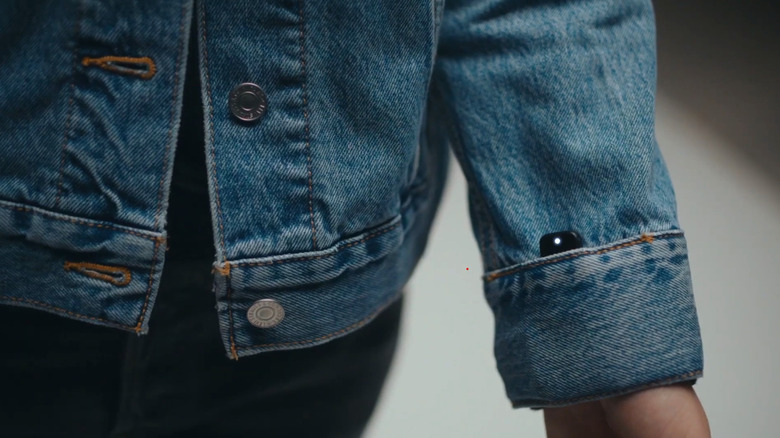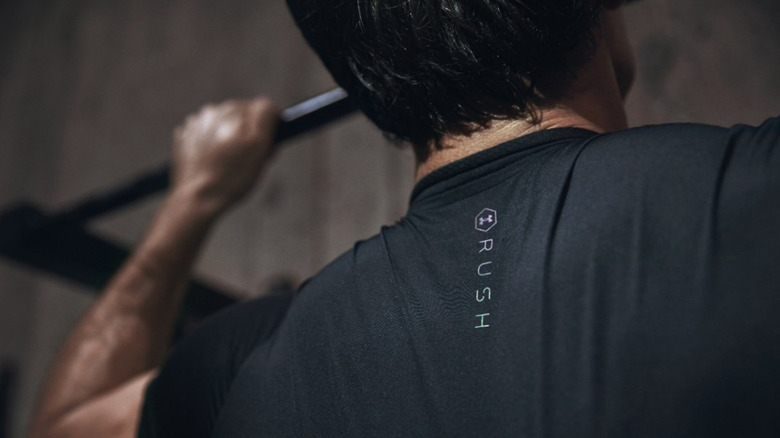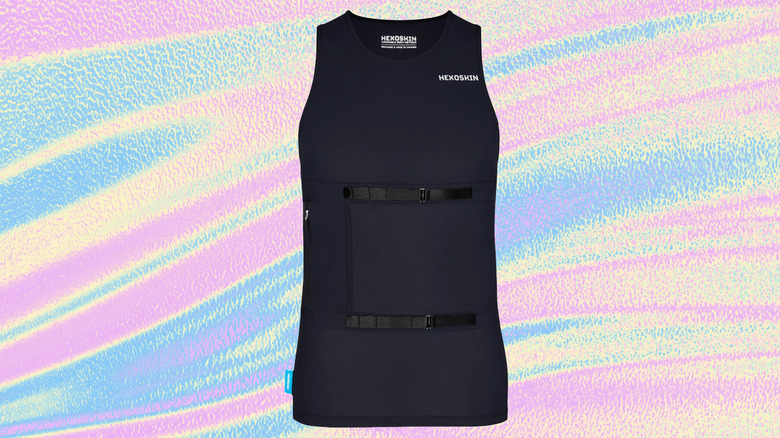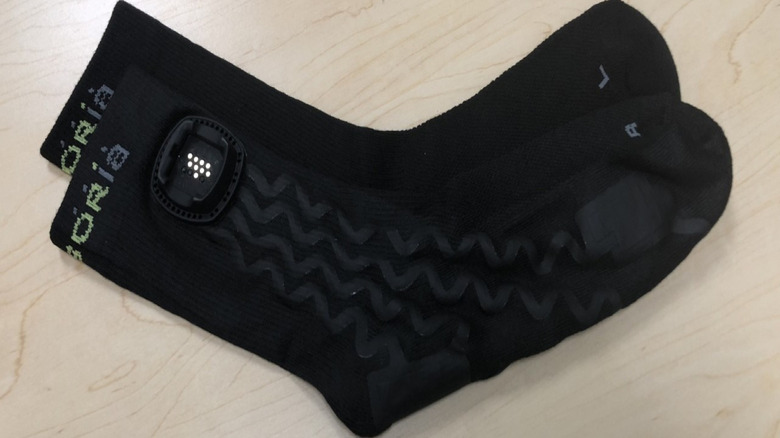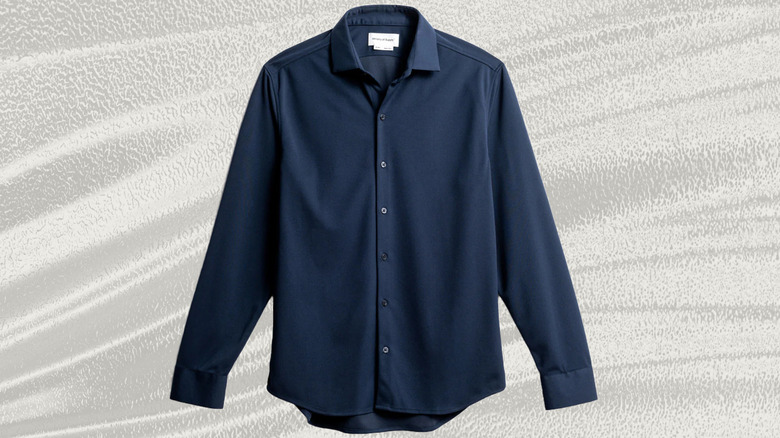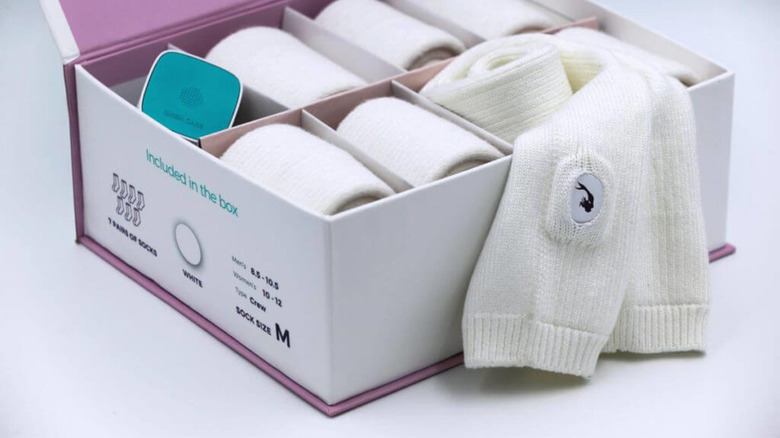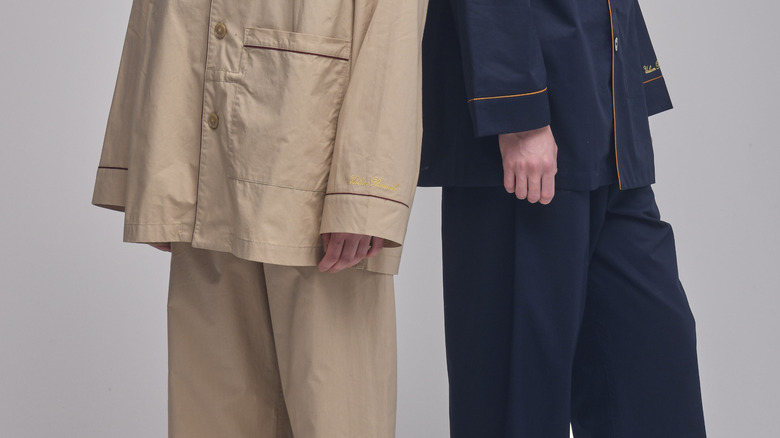These Smart Clothes Look Strange But Might Just Be Genius
The health wearables segment is largely dominated by chatter about smart rings, smartwatches, and bands. However, the concept of smart textiles has been around for a while, with names like Google entering the game. Contrary to their seemingly niche appeal, the smart textiles industry is eyeing a market cap worth around $29 billion. The rise in demand is led by the integration of low-power sensors in fabric for assessing biomarkers like heart rate, blood pressure sensing, and sweat analysis, among others.
With the arrival of generative AI, progress in the segment has only accelerated. Athletes form the core audience for such developments. Sensors working in tandem with AI algorithms take a combined approach that delivers a holistic set of benefits beyond simple tracking, offering custom suggestions for maximizing performance, keeping a vigilant eye on any physical issues, and combining the health for periodic breakdowns of net growth.
Management of chronic diseases, patient monitoring, and the creation of therapeutic devices are some of the applications. Researchers at MIT, for example, managed to weave sensors into a fabric capable of posture monitoring and motion detection while conforming to body shape. Thankfully, a healthy few of these innovations have already made it to market, offering buyers a taste of what the future of smart clothing is going to accomplish for them in the coming years. These are some of the best.
Under Armour Rush
American sportswear company Under Armour worked with high-performance textile label Celliant to create its UA Rush line back in 2019. The company described it as "a mineral-infused fabric designed to enhance performance, giving athletes that extra edge by recycling the body's energy during moments of performance."
Think of an infrared sauna and its benefits, but miniaturized in the form of sports apparel.
The fabrics used in the lineup are infused with minerals that essentially act as energy radiators. The fundamental concept here is quite simple. When a person is engaged in rigorous physical activity, the body emits heat. The minerals blended within the RUSH fabric absorb that heat, convert it into infrared energy, and send it back to the skin surface. We are talking about the far infrared radiation (FIR) here, which is ultimately said to help with tissue oxygenation,
The idea here is to trap and re-emit a portion of the heat energy that athletes produce during workouts or field outings. Under Armour claims that this approach enhanced the localized circulation, which not only gives a performance edge, but also lends a hand with recovery and energization. The label even tapped superstars like Stephen Curry, Anthony Joshua, and Kelley O'Hara to showcase the performance benefits of its Rush portfolio, which starts at $45 in the US market, and is up for grabs worldwide.
Hexoskin smart shirt
A stack of miniaturized health sensors and water exposure don't usually go hand in hand, yet Hexoskin claims to offer just that. The brand's namesake shirt is a washable garment with sensors embedded within. The vest offers a non-invasive and comfortable approach to monitor a wide range of biomarkers. Starting with the physical traits, the fabric is breathable, but also has a host of other "normal" perks such as odor repulsion, lightweight profile, UV protection, and resistance to chlorine's bleaching effect.
Coming to its "smart" capabilities, the Hexoskin vest allows continuous cardiac, pulmonary, activity & sleep monitoring. Just like the Apple Watch, it can also perform ECG measurements, alongside breathing and respiratory ventilation rates using Chest and Abdominal Respiratory inductance plethysmography (RIP) sensors. The 3-axis accelerometer, on the other hand, is capable of measuring activity metrics such as steps walked, cadence, sleep posture, and more.
The integrated sensor subsequently breaks down its measurement across six key metrics, which include heart rate zone breakdowns, VO2 Max levels, and heart rate recovery, to name a few. Users also get access to detailed sleep assessment reports. The battery is intended to last roughly 36 hours on a single charge, and findings are sent to a companion app that is available across the Android and Apple ecosystem. Notably, the Hexoskin vest has also been used by researchers across the globe for clinical research into the application of wearable health sensors to detect a wide range of problems such as sleep disorders, cardiac woes, and respiratory issues.
Athos fitness apparel
Athos first made waves over a decade ago with some splashy funding at a time when the fitness wearable segment was in a nascent stage. Today, the brand offers shirts, shorts, and leggings with an Athos Core kit that turns data collected from an onboard EMG kit into insights for individuals interested in tracking their muscular activity. The secret sauce here is electromyography (EMG), which essentially detects the electrical impulses generated by the movement and stress on muscle tissue.
Athos doesn't skimp on sensors, to be fair. According to a product listing, the Athos shirt comes equipped with two heart rate sensors, 14 EMG sensors, and a couple of breathing sensors. All this data is relayed to a central hub called The Core, which subsequently shares it via Bluetooth lanes to the companion mobile app. In case you are unfamiliar, EMG is deployed to measure muscle activity when at rest and during activity, using the electrical potential generated by muscle cells to look for signs of anomalies, measure activation levels, and analyze the biomechanics associated with movements.
For performance athletes, EMG readings offer valuable insights into the workings of their muscle tissue, the kind of stress it can endure, and what that says about their training regimen, among others. Athos turned all that data collected via the Core attachment into actionable insights so that users could keep an eye on their workouts while also avoiding the chances of injuries.
Sensoria Smart Socks
Imagine a pair of socks that are comfy and breathable. They offer antibacterial and antimicrobial benefits, and also include a pressure sensor to fix your walk. Well, that is exactly what the Sensoria Socks are. Thanks to the embedded sensors and the algorithm baked at the heart of the mobile app, the socks can measure metrics such as stride length, velocity, step length, stance time, distance, swing time, and foot contact time on the ground while running, to name a few.
In a nutshell, they capture all the information that could help you assess your gait, whether you are taking a light stroll in the park or running a marathon. The socks come with textile sensors and rely on the detachable Sensoria Core microelectronics hub that can handle chores like step counting, speed measurement, calorie tracking, altitude, and distance tracking.
These gait analysis socks also offer a handful of advanced wellness features such as fall prediction as well as fall detection. "The proposed system has been proven to be accurate for the estimation of temporal gait parameters and had better accuracy than a system commonly used in clinical applications (Mobility Lab) in estimating spatial parameters," claims the company. The Sensoria says the shoes can help users identify if their running style can lead to injuries, and will provide feedback in real-time using audible alerts. Thanks to the built-in odometer, users will also be nudged when it's time to buy new shoes.
Ministry of Supply Apollo Shirt
NASA merch is pretty cool, but it's not every day that you see a shirt that uses actual NASA tech. Enter Ministry of Supply, which hawks a line of shirts that borrows tech from space suits worn by NASA astronauts. The Apollo shirts, which are said to be 19 times more breathable than an average fabric, rely on Phase-change Materials (PCMs) for temperature regulation. The PC material actually turns the shirt into a makeshift thermal battery, of sorts, while drawing heat from the body.
"This way, when you get back into your AC'ed office, the shirt will release the heat back to you and keep your skin at the temperature it should be at," claims the company, which was started by MIT alumni Gihan Amarasiriwardena and Kevin Rustagi. Aside from temperature management, the shirt is also said to draw moisture away from the skin, keeping the body dry even in warm summers. The Apollo shirt also employs silver threads and an anti-bacterial coating to keep body odor in check.
Another cool aspect of the fabric used is strain analysis, which essentially takes into account the natural stretch of the material and tailoring the shirt in such a way that it adapts to the body movement. It's less fancy way of saying that is if the shirt is tucked clean, it will stay that way. Also, some proprietary synthetic fabric blend was also poured into the Apollo shirts, making them wrinkle-free.
Spinali Design Smart Jeans
French startup Spinali Design wowed the audience at the world's largest consumer electronics show a few years ago with the reveal of Essential jeans. The company introduced them as navigation jeans, thanks to a pair of chips integrated with the fabric that provided direction cues to users. All you have to do is enter your destination on the connected smartphone, and as you embark on your journey, you will get haptic cues from the left or light leg of the jeans for taking the appropriate direction.
These jeans also alert users when they get a text message or any other important alert. The team over at Spinali Design created a neat filtering system so that only the most important messages pass through and provide the vibration alert. The vibration sensors are tucked right above the side pocket.
It's a neat way of avoiding smartphone burnout and the constant need to stare at a screen for a task as low-stakes as walking to a nearby spot. The idea has since made its way garments to living on our wrists through smartwatches, like the ubiquitous Apple Watch or the fancy hybrid watches made by the likes of Withings. Spinali subsequently putthe sensor in a line of fashionable dresses and robes, as well. The Essential jeans, however, won't be the only piece of smart clothing in Spinali's arsenal, which brings us to our next entry ...
Neviano UV sensing swimsuit
Spinali also developed a connected bikini, which came equipped with an embedded UV sensor. The sensing stack would assess the intensity of the sun's rays and alert users that their skin could use some protection, or to seek some shade. Sold under its Neviano label, it is touted to be "the world's first connected bikini." While a waterproof UV sensor may not sound like a breathtaking innovation, it's the accompanying personalization that sets it apart.
Even before you don the Neviano UV Protect bikini, which comes in six design variants and dozens of color choices, the app creates a skin profile. The idea is to gauge the skin tone and its adjacent sensitivity so that a person who is prone to sunburns gets the alert before the rest of their pool, which is blessed with plenty of natural melanin.
"The idea came to me on a day when I saw someone get sunburnt on a beach," CEO of Spinali Design, Marie Spinali, told FastCompany. "I was wondering why the person didn't apply some more sunscreen ... so I invented something useful for women." The connected app even offers a Valentine's function that would nudge one's partner to hand over a tube of sun block.
In addition to a selection of tech-savvy bikinis, Spinali also developed a smart towel with the same UV sensor, and also sold the sensor separately for the other gender which won't look particularly ravishing in a bikini set.
Siren Diabetic Socks
A recurring theme in the consumer electronics industry is the quest to solve complex problems with simple solutions. The Siren Diabetic socks are a fine example of that. These socks keep an eye on foot temperature in order to reduce the chances of ulcers. "Rising foot temperature indicates that inflammation is developing, which may be a sign of injury," says the company. For people living with diabetes, it's important as they have a much higher chance of contracting a foot ulcer, a number of which necessitate an amputation.
Keeping an eye on temperature has proven an effective strategy for minimizing the risk of foot ulcers, and that's where the Siren socks come into the picture. They enable real-time foot temperature monitoring, which helps users look for signs of injuries that could worsen over time. According to Siren, the machine washable socks are covered by Medicare and can be replaced automatically following the cycle of wear and tear.
For the sake of added convenience, they don't require charging, and a smartphone-connected approach isn't mandatory, either. It seems the approach has worked, thanks to clinical validation. Citing research data published just a year ago, Siren claims that the socks' continuous remote temperature monitoring program resulted in a 68% downturn in instances of foot ulcers and an 83% reduction in amputations among patients at risk of neuropathic foot ulcers.
Xenoma Smart Pajamas for sleep
Xenoma first made a splash with the launch of its Digital Health Care Pajamas, which track sleep and offer valuable insights such as sleep history, quality score, and tips on improving the shut-eye for maximum recovery. The comfy sleepwear— which looks great, by the way — also comes with a remote controller that interacts with the air conditioner in your room and automatically makes temperature adjustments depending on the input it receives from the pajama sensor.
But why pick a pajama over something like a fitness band or ring? "Our pajama-type solution is more naturally incorporated into your life," argues Xenoma. The companion app will offer insights about the sleep stages and assign scores based on five core parameters, which include sleep rhythm, sound sleep, and total time spent sleeping. Developed in collaboration with Urban Research, these smart clothes were developed in response to worrying sleep deprivation trends.
Just over a year ago, Urban Research launched a rental service for the smart sleep pajama at the Nagano Prefecture campsite to offer people a trial glimpse into physical and mental wellness close to the Yatsugatake mountains. Xenoma, on the other hand, has moved a step ahead with the launch of its e-skin PCF (Printed Circuit Fabric) technology which involves integrating a circuit on a washable fabric surface. One of the resulting innovations is a vest with an integrated ambulatory ECG monitoring system and a slick exercise tracking suit.
Nadi X Yoga Pants
A project from a Kickstarter managed to find a niche and evolved into a hot business for Yoga enthusiasts. Say hello to the Nadi X, "the first ever pair of smart yoga pants" that aim to fix your Yoga form using electronics enmeshed within the flexible fabric.
The accessory, which slots into an insert close to the knee, powers the sensor array on the pants. The sensor array is woven around the hips, knees, and ankle areas. The onboard motion sensors detect the pose and then provide gentle vibration feedback in the area where users need to pay attention. Medical Research even featured the product in their round-up of essential wellness apps.
To showcase the efficacy of its sensor-embedded pants, the company also joined hands with Spectrum Ergonomics for a study to showcase the smart pant's impact. Following a four-week analysis, participants reported improvements in lower back pain woes and notable speed improvements, as well.
The overarching goal is to give users the tool and guidance that lets them derive the benefits of yoga, tailor-made to their own schedule and intensity preferences. Or as Billie Whitehouse, co-founder and CEO, puts it, "It is easier to practice yoga on your own terms."
